 |
| Ciment Saint-Laurent (credits Charles-Henri Leclerc, circa 1974) |
A few years ago, I found an interesting color photograph of a nice Ciment Saint-Laurent trailer truck taken by photograph Charles-Henri Leclerc in 1974 for a advertising (I post the picture because I'm unable to find the original website were it was available back then). To my surprise, the sidings in Villeneuve were full of coal hoppers lettered for Pennsylvania Railroad and Pittsburg & Shawmut!!! Imagine my surprise to see foreign cars on Murray Bay and coal hoppers to boot! After a few searches, I was able to locate Bowser and Stewart hoppers similar to the picture.
I built them without modification except Kadee couplers and blackened metal wheels. I could have replaced grabirons with metal ones - I once did it for a Minneapolis & St. Louis hopper - but felt it would be a lot of tiring work for something not very rewarding. Thus, I went directly to weathering.
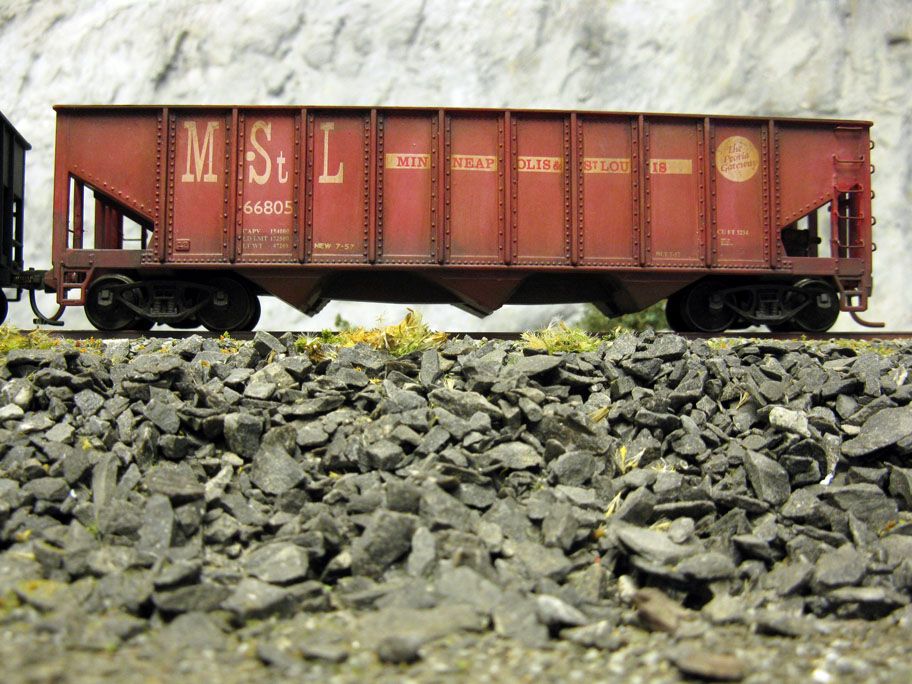 |
| A car unlikely to be seen in Quebec City Area |
First of all, I think weathering the inside of an hopper is the most important step. I masked the cars except the inside and sprayed the interiors with Krylon brown primer and Krylon brown camouflage. This gives a nice coat of rust color just like the prototypes. If you look at a real coal hopper, you'll see a ghost line of corrosion showing the profile of the coal load. I suspect this is caused by the coal itself, probably with help of rain. Above the ghost line, paint is habitually still holding and in a relatively good shape. Under the line, only the red primer still stick to the steel carbody and wear and corrosion are quite visible. To reproduce that, I use my airbrush and spray the upper part of the hopper with thinned down black paint. No need to be perfect because I complete the job by brushing black pastel chalk powder over the painted area to blend it together with adjacent surfaces.
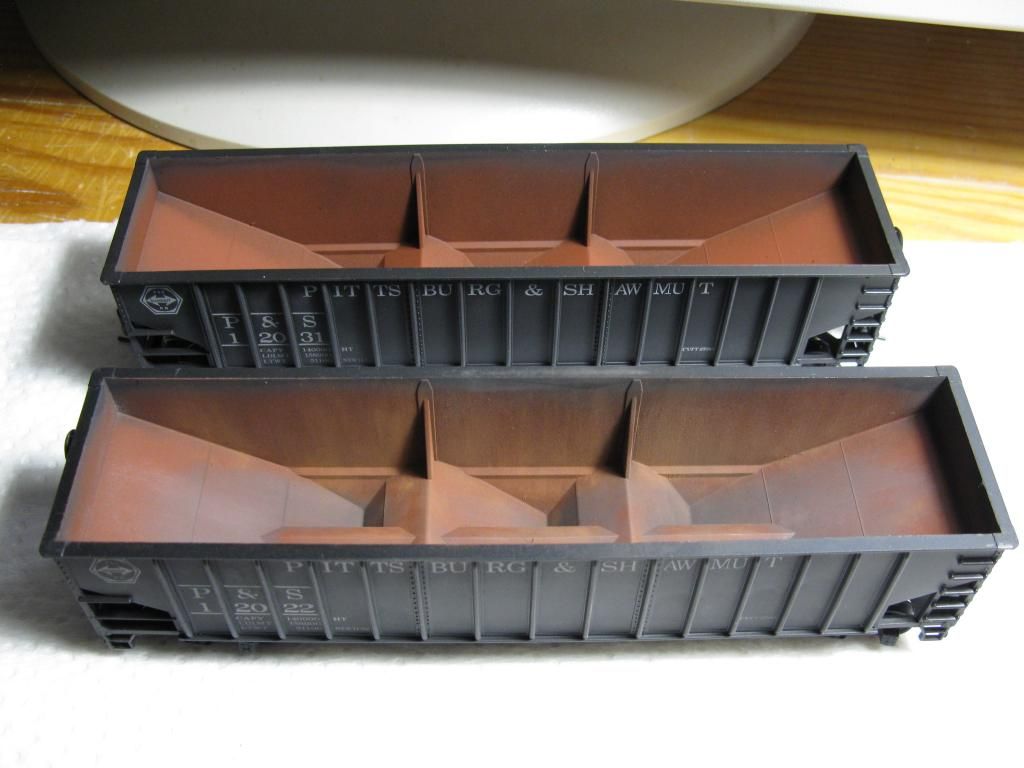 |
| Above: car without chalk / Under: car without pastel chalk |
Then, using brown and tan pastel chalk, I brush vertical strokes on the car sides. This represent rust and dust washed down by rain. No, I don't dullcote the final result. I found the pastel chalk inside the car to stay in place even during manipulation. Also, you can always add more later. Finally, the dullcote would kill the dusty texture which is crucial if you want your cars to look like they are loaded with bulk material. But before I dust my cars interior, I weather the outside. That's the fun part.
As seen on the 1974 photo, Shawmut Line hoppers are quite pristine. Their lettering is intact and there's no rust or discernable discoloration. Weathering was done with a dusting of black and brown pastel chalk to fade lettering more or less. Brown chalk is used sparringly to give hints of rusting.
Pennsylvania cars were more worn out. Indeed, they are older and by that time, PRR was already a fallen flag. In fact, I found pictures of these hoppers still in service in the 80s with their original paint scheme.
If you look at them, most are covered by a layer of dust and rust giving them a brownish hue. Also, lettering is severely peeling off. To get this result, I used a stiff large brush used for drybrushing and dabbed black acrylic paint over the letters to partially erase them. The models were then sprayed with dullcote to seal everything and get a uniform surface for the next step.
I used an oil paint wash made of raw umber and burnt umber. In some place, I dabbed oil paint then applied the wash. Most excess was washed out because I didn't want over the top sedimentation of rust color on the car sills.
Finally, a last coat of dullcote sealed everything and I lightly applied a coat of powdered pastel chalk to dust the car and gives it a similar aspect than the Shawmut Line cars.
I can consider my coal hoppers fleet to be almost completed. If I can find a few more Stewart or Bowser Pennsylvania hoppers, that would be nice since the cement plant is design to hold about 5 cars at once. Meaning ten of them would be a nice number.
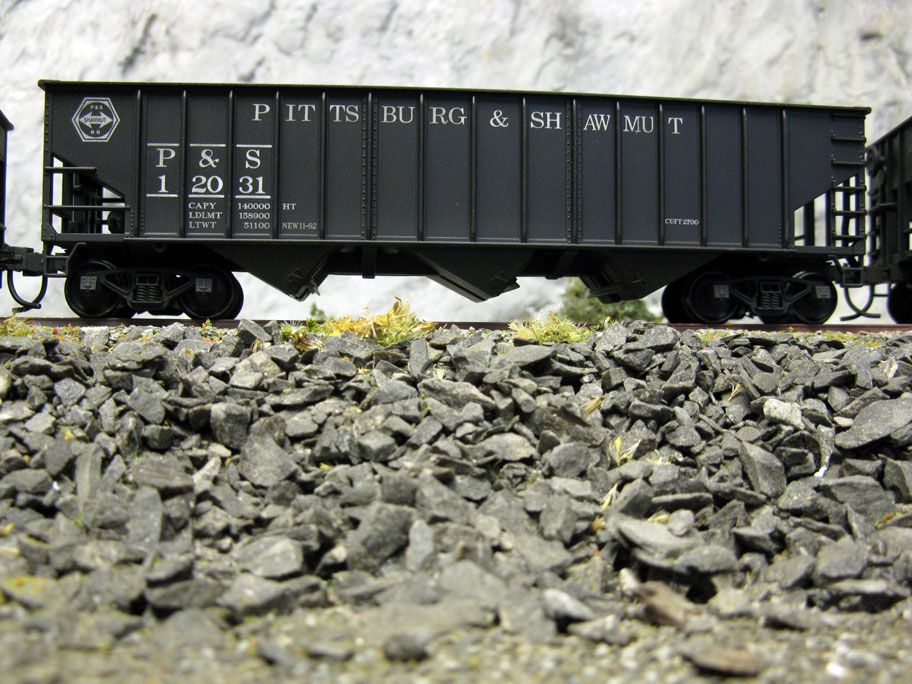

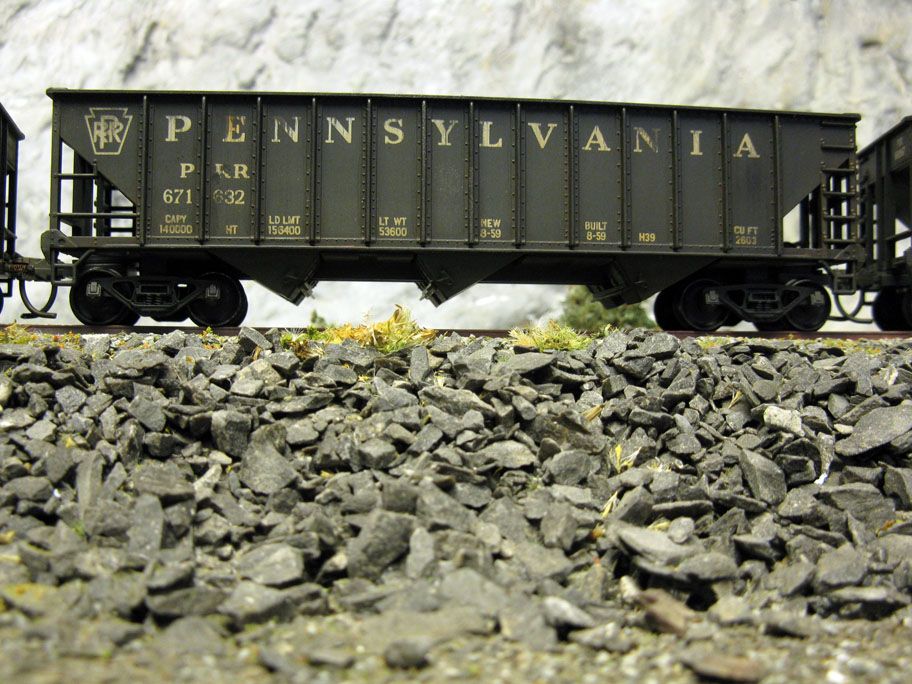
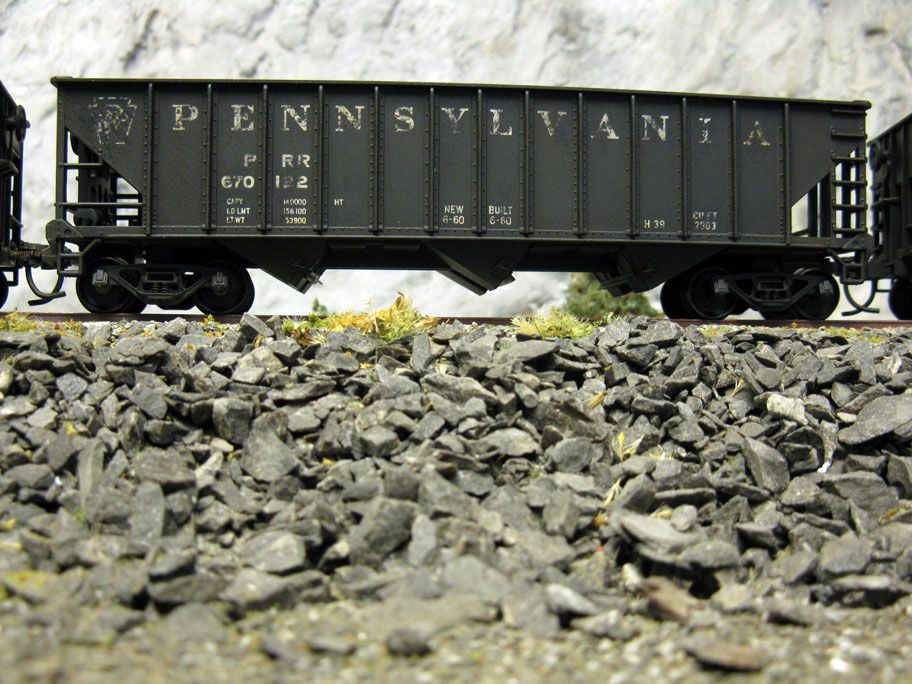

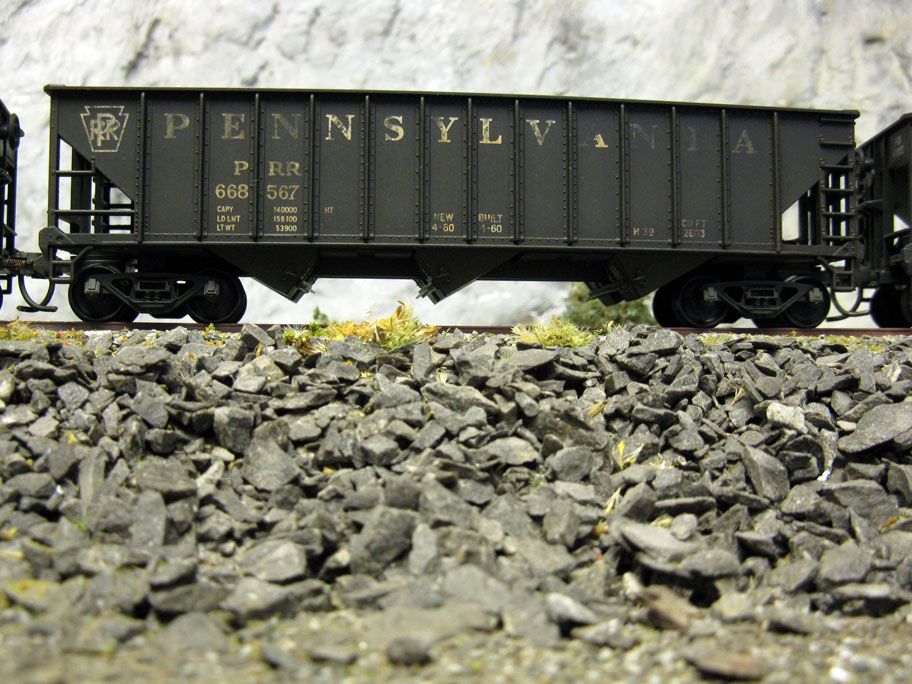
Parfaite perfection! O_O
ReplyDelete